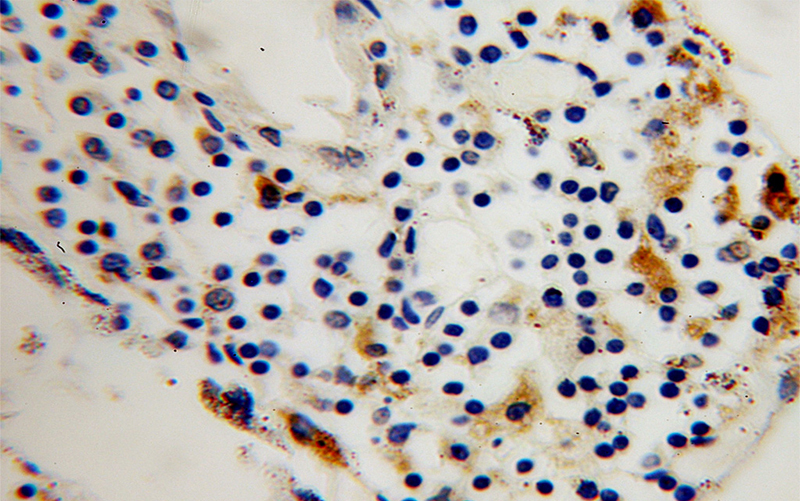-
Product Name
TPP1 antibody
- Documents
-
Description
TPP1 Rabbit Polyclonal antibody. Positive IHC detected in human colon cancer tissue. Positive WB detected in human colon tissue. Observed molecular weight by Western-blot: 66kd
-
Tested applications
ELISA, WB, IHC
-
Species reactivity
Human,Mouse,Rat; other species not tested.
-
Alternative names
CLN2 antibody; GIG1 antibody; LPIC antibody; TPP 1 antibody; TPP I antibody; TPP1 antibody; Tripeptidyl aminopeptidase antibody; Tripeptidyl peptidase 1 antibody; tripeptidyl peptidase I antibody; UNQ267/PRO304 antibody
-
Isotype
Rabbit IgG
-
Preparation
This antibody was obtained by immunization of TPP1 recombinant protein (Accession Number: NM_000391). Purification method: Antigen affinity purified.
-
Clonality
Polyclonal
-
Formulation
PBS with 0.02% sodium azide and 50% glycerol pH 7.3.
-
Storage instructions
Store at -20℃. DO NOT ALIQUOT
-
Applications
Recommended Dilution:
WB: 1:200-1:2000
IHC: 1:20-1:200
-
Validations

human colon tissue were subjected to SDS PAGE followed by western blot with Catalog No:116209(TPP1 antibody) at dilution of 1:300

Immunohistochemical of paraffin-embedded human colon cancer using Catalog No:116209(TPP1 antibody) at dilution of 1:50 (under 10x lens)

Immunohistochemical of paraffin-embedded human colon cancer using Catalog No:116209(TPP1 antibody) at dilution of 1:50 (under 40x lens)
-
Background
TRIPEPTIDYL PEPTIDASE I, TPP1, is a lysosomal exopeptidase that sequentially removes tripeptides from the N termini of proteins. The proenzyme has an apparent molecular mass of 66 kD, and the mature enzyme has an apparent molecular mass of 46 to 48 kD.Defects in TPP1 are the cause of neuronal ceroid lipofuscinosis type 2 (CLN2). This protein distributes widely in all tissues.
-
References
- Jiang GJ, Ma JY, Zhang GL. Protein profiling the differences between diabetic and normal mouse cumulus cells. Molecular reproduction and development. 81(12):1080-5. 2014.
Related Products / Services
Please note: All products are "FOR RESEARCH USE ONLY AND ARE NOT INTENDED FOR DIAGNOSTIC OR THERAPEUTIC USE"
